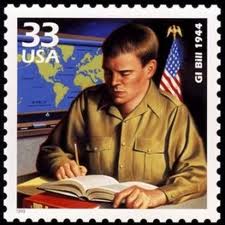The Fourth of July, a Holiday Uniquely American
The American Experiment began with a raised fist towards the mightiest of world powers. It was built for the long haul.
A Founding Father from Massachusetts, John Adams, soon to be the second president of the United States of America, actually had a firm grasp of what he and his colleagues had wrought. Adams wrote to his wife Abigail:
The second of July, 1776, will be the most memorable epoch in the history of America. I am apt to believe that it will be celebrated by succeeding generations as the great anniversary festival. ..It ought to be solemnized with pomp and parade, with shows, games, sports, guns, bells, bonfires and illuminations, from the one end of the continent to the other, from this time forward forever more.
Hold on: July 2, 1776? No typo. That was the date that the Second Continental Congress voted to approve a resolution of independence. Raising their fists to Great Britain, the world’s dominant power, was an act of enormous courage.
Two days later, on July 4, after debating some revisions of Thomas Jefferson’s prose, the Declaration of Independence was approved. Let the parties begin.

Founding Fathers Thomas Jefferson and John Adams both had a meaningful attachment to the 4th of July. They were once political foes who fought to succeed George Washington as president of the fledgling nation. In 1796, it was Adams’ turn to continue Washington’s Federalist Party governance. Thomas Jefferson, a Democrat-Republican, became Adams’s vice president.
Jefferson was soon plotting to win the 1800 presidential election.
Battle Between Founding Fathers.
John Adams had a fitful presidency, full of distractions such as the Alien and Sedition Acts and something called the XYZ Affair. Adams couldn’t even count on fellow Federalist Alexander Hamilton, who declared Adams’ presidency “hopeless.”
When the electoral votes were finally counted, Jefferson captured eight more electors than Adams (73-65). Jefferson’s choice of Aaron Burr as vice president proved wise in securing the New York delegation for the winner.
The election of 1800 is significant because it was our country’s first peaceful transfer of power between political parties. Even the seditious actions by 2020 presidential election loser Donald Trump couldn’t upend the American Experiment. It is built for the long haul.
Old Foes Go Out Together, July 4, 1826
After Jefferson served two terms (1801-1809), he sent word that he would like to reunite with “a fellow laborer in the same cause.” Adams responded affirmatively. Historians estimate that, between 1812 and 1826, about 158 letters were exchanged between Adams and Jefferson.
On July 4, 1826, John Adams, then 90 years old, lay on his deathbed while the country he helped found celebrated Independence Day. Adams’ last words were, Thomas Jefferson still survives. John Adams was mistaken. Jefferson at age 82 had died at Monticello five hours earlier.
Philly Throws a Great First Fourth
In the year 1777, on the first anniversary of the Declaration of Independence, my hometown of Philadelphia threw a party that modern Americans would find quite familiar. There was
…an official dinner for the Continental Congress, toasts, 13-gun salutes, speeches, prayers, music, parades, troop reviews [we were at war, after all] and fireworks. Ships in port were decked in red, white and blue bunting.
The music accompanying 4th of July festivities during that time was patriotic songs that memorialized battles and generals. One song that survived the centuries was Yankee Doodle Dandy.
Yankee Doodle Dandy
Yankee Doodle was originally sung by British officers to mock the disheveled colonial Yankees who dared fight the world’s greatest fighting force at the time. British troops made fun of plain-looking Americans who fancied themselves stylish by sticking “a feather in their caps,” a misappropriation of British upper-class fashion.
American troops had the last word. They added verses that mocked British officers and hailed General George Washington. By the time of the British surrender, Yankee Doodle had been transformed from an insult to Americans to a song of national pride.
Well, let it be known throughout the land that “we, the people” have gotten a little more creative with our music-making. I offer two videos as proof.
America: A Land of Immigrants
The first song was written by the great Woody Guthrie in 1940 (actually recorded in 1944 by Folkways Records) as a progressive alternative to “God Bless America.” The song, “This Land is Your Land,” is sung by another music icon, Pete Seeger, on the occasion of Seeger’s 90th birthday, May 3, 2009 (he died in 2014). The performance, on January 19, 2009, was part of President Obama’s first inaugural ceremonies. The video is published by fful, copyright by HBO via YouTube:
The Mason-Dixon Line
The second song, “Sailing to Philadelphia,” is off Mark Knopfler’s second solo album, released in September 2000. It is a duet between Knopfler and James Taylor, who play two English surveyors pondering moving to America, the supposed land of opportunity. The lyrics reveal what Charles Mason and Jeremiah Dixon accomplished in the New World (Hint: their last names). Published by Moncef Kahia via YouTube:
Have a happy 4th of July!




















































































































